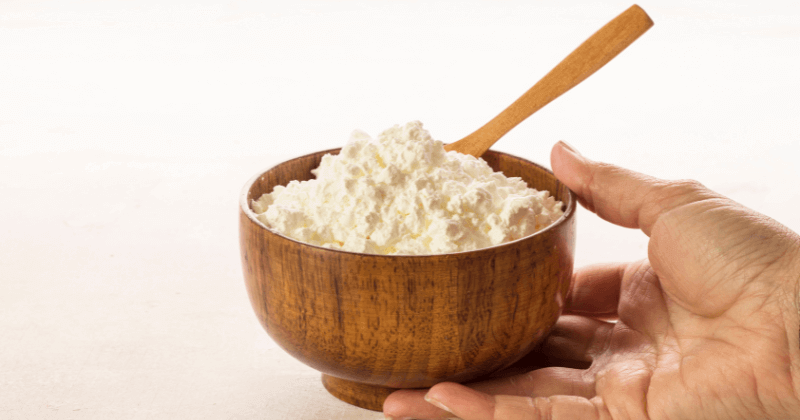Protein in 500 Gm of Curd
Curd, also known as dahi in India, has been a staple in Indian households for centuries.
Whether paired with parathas, added to rice, or enjoyed on its own, curd is loved for its creamy texture, tangy taste, and impressive nutritional benefits.
One of the biggest highlights of curd is its high protein content, making it a favorite among fitness enthusiasts, weight-watchers, and health-conscious individuals. But how much protein does 500 gm curd contain?
And how does it benefit your health? Let's dive into the world of curd protein and explore why this humble dairy product deserves a top spot in your diet.
500 Gm Curd Protein
The protein content of curd varies based on factors like fat content, milk source, and preparation method.
500 gm curd contains 18-40 gm protein, depending on type. It's a rich, digestible protein source with probiotics, aiding muscle growth & gut health.
Here’s a breakdown of protein content in 500 gm of different types of curd:
✅ Full-Fat Curd: Around 18-20 grams of protein
✅ Low-Fat Curd: Approximately 22-25 grams of protein
✅ Greek Yogurt (Strained Curd): Can contain 35-40 grams of protein
✅ Homemade Curd: Varies between 15-22 grams of protein depending on fermentation time and milk quality
Greek yogurt and low-fat curd have the highest protein concentration, making them excellent choices for those looking to increase their protein intake.
Why Is Curd a Great Protein Source?
Curd is more than just a tasty dairy product; it’s a highly bioavailable source of protein.
This means that the protein in curd is easily digested and absorbed by the body, making it more effective in muscle building and repair.
Here’s why curd is an excellent protein source:
-
Complete Protein: Curd contains all nine essential amino acids, which are crucial for muscle growth, repair, and overall health.
-
Easily Digestible: Unlike some other protein sources, curd is gentle on the stomach and improves digestion due to its probiotic content.
-
Lactose Friendly: Fermented curd contains lower levels of lactose, making it easier to digest for people with mild lactose intolerance.
Health Benefits of Eating 500 Gm Curd Daily
Including 500 gm of curd in your diet can have numerous health benefits:
🌟 Muscle Building & Strength
For those who hit the gym regularly, curd is an excellent post-workout recovery food. The protein helps in muscle repair and growth, while the calcium content strengthens bones.
🌟 Weight Loss & Metabolism Boost
Curd is rich in protein, which increases satiety and reduces hunger cravings. The probiotics also help regulate metabolism, making weight loss easier.
🌟 Gut Health & Digestion
Curd contains probiotics (good bacteria) like Lactobacillus, which improve digestion and keep your gut healthy. This helps in preventing issues like bloating, constipation, and indigestion.
🌟 Immunity Booster
The probiotics and essential nutrients in curd strengthen the immune system, reducing the risk of infections and common illnesses.
🌟 Stronger Bones & Teeth
Curd is high in calcium and phosphorus, which are essential for maintaining strong bones and teeth and preventing conditions like osteoporosis.
How to Include 500 Gm Curd in Your Daily Diet?
If you’re looking to consume 500 gm of curd daily but don’t want to get bored with the same taste, here are some delicious ways to incorporate it into your diet:
✔️ Curd Rice: A classic South Indian dish that is cooling and easy to digest.
✔️ Greek Yogurt Smoothie: Blend curd with fruits, nuts, and honey for a delicious protein-packed smoothie.
✔️ Raita Variations: Make cucumber raita, boondi raita, or mint raita to pair with meals.
✔️ Curd-Based Salad Dressings: Use curd as a base for homemade, healthy salad dressings.
✔️ Homemade Paneer: Strain curd to make fresh paneer, a protein-rich alternative to cheese.
Curd vs. Other Protein Sources: How Does It Compare?
How does 500 gm of curd compare to other common protein sources?
| Protein Source | Protein in 500 gm |
|---|---|
| Curd (Full Fat) | 18-20 gm |
| Curd (Low Fat) | 22-25 gm |
| Greek Yogurt | 35-40 gm |
| Milk | 17-18 gm |
| Eggs (5 whole) | 30-35 gm |
| Chicken Breast | 50-55 gm |
| Paneer | 35-40 gm |
While chicken and paneer have higher protein content, curd offers additional benefits like probiotics, better digestion, and calcium, making it a balanced choice.
Homemade vs. Store-Bought Curd: Which is Better?
Many people wonder whether homemade curd or store-bought curd is a better option. Here’s a quick comparison:
| Factor | Homemade Curd | Store-Bought Curd |
| Freshness | Fresher | May contain preservatives |
| Probiotics | Higher count | Varies (sometimes lower) |
| Additives | No additives | May contain stabilizers |
| Taste | Natural and richer | Can be processed |
Homemade curd is often healthier, free from additives, and contains more probiotics, making it the preferred choice for maximum health benefits.
Conclusion
Curd is one of the best protein sources available in Indian kitchens, offering a blend of muscle-building protein, gut-friendly probiotics, and bone-strengthening calcium.
Consuming 500 gm of curd daily can help with weight management, digestion, immunity, and overall health.
Whether you choose full-fat curd, low-fat curd, or Greek yogurt, this versatile dairy product is an excellent addition to your daily diet.
So, next time you enjoy a bowl of curd, remember – you’re not just savoring a delicious dish, but also fueling your body with high-quality protein!
